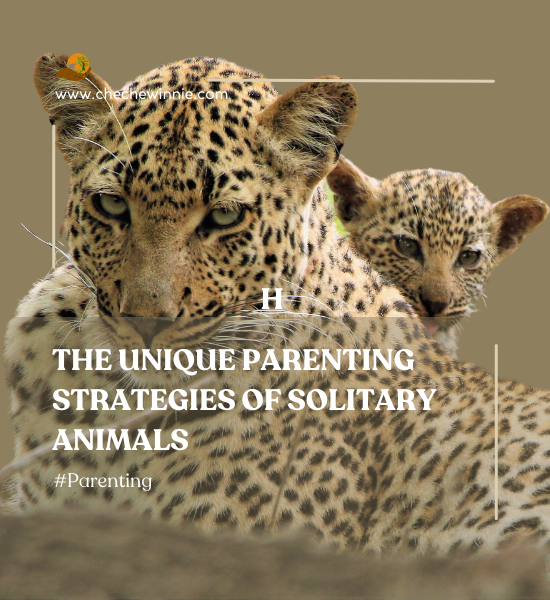Parenting is a fundamental behaviour that ensures the survival of many species. While it is typically associated with social animals, there are many solitary animals that exhibit exceptional parenting skills.
Balancing Survival and Parenting
Solitary animals typically live alone, without the support or protection of a social group.
This means that they must manage all aspects of parenting on their own, including finding food and protecting their young.
One of the main challenges that solitary animals face is balancing the demands of caring for their offspring with their own survival needs. They must hunt and forage for food, which means they may have to leave their young unattended for extended periods, putting them at risk of predation or starvation.
Unique Parenting Strategies
To cope with these challenges, solitary animals have developed a range of unique parenting strategies.
- One strategy is to provide their young with a safe place to hide while they are away. For example, female leopards leave their cubs hidden in a den while they hunt. The cubs are left alone for several hours at a time, but they are well-protected by the den and their mother’s scent, which helps to deter predators.
- Another strategy is to provide their young with an ample supply of food when they are present. For example, female bears spend months foraging and storing food in preparation for the birth of their cubs. This allows them to provide a steady supply of nourishment to their young, even when they have to leave them alone for extended periods.
Physical and Behavioral Adaptations
Solitary animals also rely on a range of physical and behavioural adaptations to protect and care for their young.
Many have highly developed senses of smell and hearing, which allows them to detect potential threats and protect their offspring.
Some species, such as wolves, use complex vocalizations and body language to communicate with their young and coordinate parenting behaviours.
Challenges of Inbreeding
Despite their adaptations, solitary animals still face significant challenges when it comes to parenting.
One major challenge is the risk of inbreeding, which can lead to genetic disorders and reduced fitness in offspring. To avoid this, solitary animals often mate with individuals from other territories or travel long distances to find mates.
Conclusion
In conclusion, while solitary animals face unique challenges when it comes to parenting, they have evolved a range of highly effective strategies and adaptations to ensure the survival and well-being of their young. By balancing their own needs with those of their offspring and relying on their highly developed senses and behaviours, solitary animals provide excellent care and protection to their young, even in the absence of social support.


Very informative.
Thank you
Hello there friend I’m glad to see I can comment on your blog now for a long time, at least a year I’ve not been able to comment or even like it but I’m glad to see WordPress sorted it out. Yet another inspiring blog post and I learned a lot, take care friend 😊 💚
Finally, I had some issues but now resolved. Thank you for the kind compliments.
Thank you